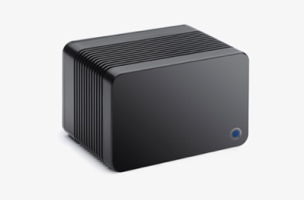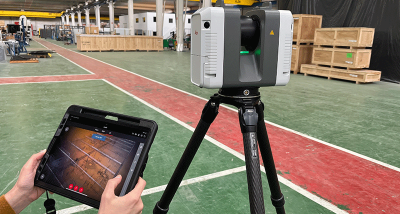After months of speculation (and some might say a fair amount of breathless hype), Quanergy’s solid-state LiDAR for automobiles made its debut at CES as a prototype.
The product, which will be called the S3, is expected to cost $250 when purchased in large volumes. The final version should be available to car manufacturers at the end of 2017, which means we will have to wait at least a year before testing Quanergy’s claim that their solid-state LiDAR is “better than traditional LiDAR systems in every single way.”
For this first version of the S3, Quanergy is touting modest specs—a range of 150 meters, an accuracy of +/- 5 centimeters at 100 meters, and a 120-degree field of view both horizontally and vertically. These specs are significantly more conservative than Quanergy’s projected specs, which included a range of 300 meters.
As far as actual performance goes, IEEE is reporting that the S3 LiDAR they saw in operation does not yet live up to Quanergy’s claims.
“We can’t tell you much about the demo (it’s under NDA),” they write, “but we can certainly say that the S3 definitely works as a solid-state LIDAR. It’s not yet performing as well as Quanergy has promised that it will, for reasons that seem, well, reasonable, in that they’re not related to Quanergy’s underlying technology. At the same time, however, we’re obligated to point out that Quanergy has not yet demonstrated a version of the S3 that performs to the specifications that they announced at their press conference, leaving us wondering whether having a press conference of this kind at CES might have been somewhat premature.”
If Quanergy can get the S3 to operate at the specs they’ve announced, it will be well-suited for autonomous vehicle use. As IEEE explains, the construction of the LiDAR system without any moving parts allows for each pulse to be directed independently from every other pulse. You can send one pulse straight to one end of the field of view, and another to the exact opposite end just a fraction of a second later.
This means an autonomous vehicle could focus its pulses ahead when you’re driving to see obstacles in its path, and focus those lasers to the side when it’s at an intersection, allowing it to see oncoming traffic.
In an interview with GPS Business News, Quanergy CEO Louay Eldada said he expects the sensor to be in half a million vehicles by 2020. The company has also indicated that they are working on $100 dollar version of the sensor that would fit in cell phones–but that is at least two years away.












